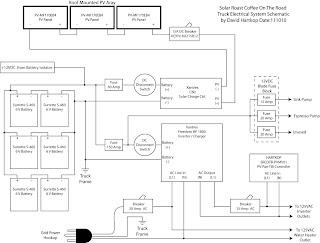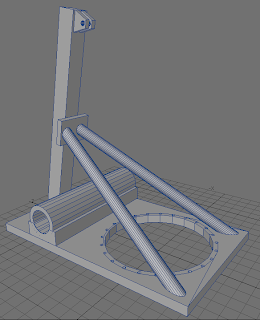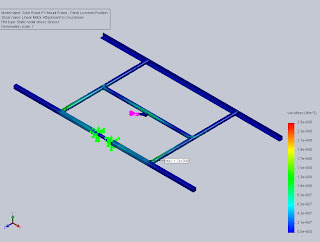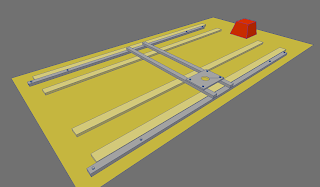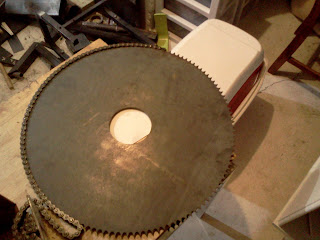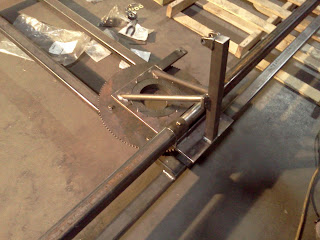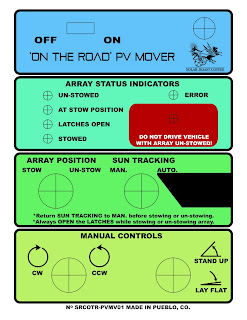| The battery vent. |
Solar Roast On The Road Truck
Sunday, October 16, 2011
Design and Construction of the Pan-Tilt Solar Truck Mount
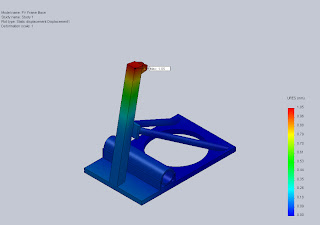 |
| I had my friend Tyler double check my design in Solid Works, making sure main stress points will withstand 90 MPH wind loading. Yes, it is all fine! |
 |
| I cut the rectangular steel tubes in my basement and then took them to the warehouse to weld, prime & paint. |
 |
| I drilled 32 holes in the gear once I extended my drill-press's arm to have a big enough radius to reach in there! |
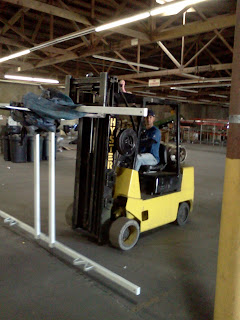 |
| Jason drives a forklift like a mofo. |
 |
| I managed not to scratch the truck OR the frame, thanks to tarps and cardboard:-) |
| Full truck height with the little arm sticking up is 11.0 feet. That's safe for most situations, and perfectly within the legal limitations of height for vehicles of this class (13 ft. in Colorado.) |
| Detail shot of my once-tidy now-functional Automation Direct PLC system. |
| Yaay! |
Solar Roast Coffee: On the Road Truck!
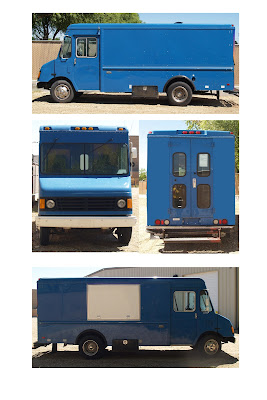 |
| This is how the Chevy P-30 box truck looked when Chris and Nathan bought it. It is essentially a big aluminum delivery van, the kind used by FedEx. |
The Proposed Design:
The Finished Paint & Stickers:
 |
| I used photoshop and illustrator to make a thorough mockup of how the truck should be painted. Nathan Stern's uncle has a business wrapping vehicles, so I then turned this image and the vector art over to him. |
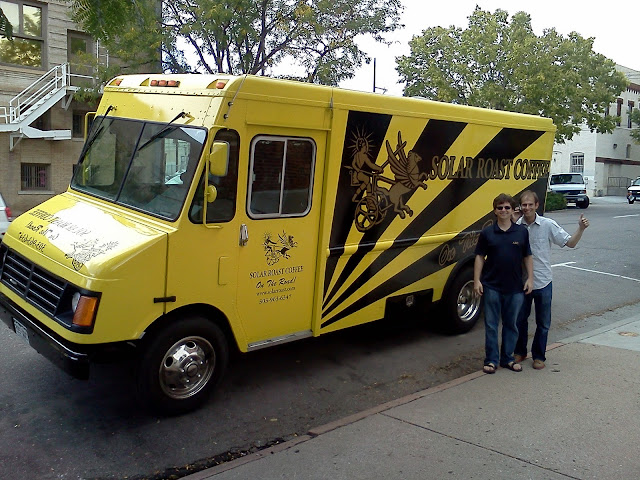 |
| I was really impressed by the results! The black detailing was painted, and the logo art is all cut and applied vinyl. |
Subscribe to:
Posts (Atom)
